A lot of people are asking what is the prostatitis. Under this term include damage, inflammatory of the prostate, which is often observed in men, after the age of 35.
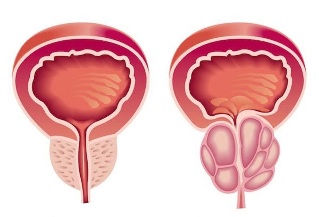
If not immediately start treatment of the condition, likelihood of complications, sexual and reproductive systems of the region.
The essence of the pathology
Under this term include inflammation of the prostate. It is a urological violation. According to statistics, it occurs in 50 % of men after 50 years.
The prostate is a glandular-muscular organ, which is localized around the urinary tube. It is responsible for the synthesis of the secretion, which bind with the seminal fluid and support the activity rate of sperm. This helps protect against the harmful effects of external factors.
Prostatitis comes from acute and chronic. In the first case, the authority to remove harmful bacteria – Proteas, e. coli, Klebsiella and other micro-organisms. The infection occurs through the urethra, the flow of the blood or the lymph.
The reasons
There are a lot of factors that cause inflammation. The main causes of prostatitis are the following:

- Disorders of the circulation. This causes an increase in the size of the prostate. The cause of the problems is the lack of exercise and overweight;
- The infectious diseases. The infection often occurs due to urethritis or gonorrhea. In more rare cases, triggering factors are influenza, tonsillitis, tuberculosis;
- Bacterial Inflammation. The cause of the problems is the penetration of the infection to the prostate. This problem may occur through the blood circulation with the lymph or during sex. The cause of the problems can be bacteria, that live on the surface of the human body or in the abdominal cavity;
- Traumatic lesions of the pelvic organs. Also the cause of the often represents a violation of blood circulation in this area. This is why the prostatitis often develops among drivers who are exposed to vibration;
- Hypothermia and low physical activity. The major factor in causing may act as a chronic disease of the genito-urinary system, hormonal imbalance, the systematic absence of sexual intercourse. The cause may be the delay of urination;
- The physical inactivity. A lack of physical activity impacts negatively on the function of the endocrine organs, the heart and the blood vessels, the nervous system. This process is accompanied by a violation of blood circulation in the pelvic organs. Hypoxia of the tissues of the gland are created the conditions for reproduction of pathogens. These factors provoke the development of prostatitis;
- Inflammatory defeat direct of the bowel or the urethra. It is a violation to cause a secondary infection of the prostate. It can be ascending or descending;
- The chronic constipation. The constant violation of the chair lead to inflammatory changes in the body.
The key reasons of illness or bad omen urological infection and a number of venereal ailments. This category includes urethritis, gonorrhea. Provoking factors may be the same to these disturbances, such as chronic bronchitis, dental caries, angina pectoris.
Types of prostatitis
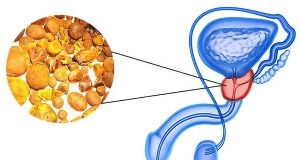
The symptoms of prostatitis are directly dependent on its varieties. The doctors emit a number of varieties of the disease, each characterized by certain features.
The
This form of the disease is usually diagnosed at 21-43 of the year. In this case, the main signs of prostate inflammation include a significant increase in the temperature may rise up to 40 degrees. Also people are a product of fatigue, chills, a violation of urination.
Often, patients suffer from a violation of the erection, painful sensations in the perineum, purulent and bloody impurities in the urine. The chronic form of the disease is more low of the event. However, when the relapse of the disease symptoms of prostatitis are strengthened.
Calculous
The main manifestations of the disease include pain in the pelvis, the sacrum and the perineum. The discomfort increases when the motor activity of the body. Also the disease is characterized by a violation of urination, bloody the impurities in the urine, increased irritability, weakening of erection.
Stagnant
For this form of the disease is characteristic of chronic leaks. The disease develops in violation of circulation of blood in the pelvic organs. Also the cause may be the flow of secretions of the prostate. Usually, it can occur in the absence of sexual intercourse.
For this form of the disease characterized by urination problems. Also the person is experiencing sensations in the testicles and the groin. It can increase the temperature, disorders of the erection, develops depression.
Purulent
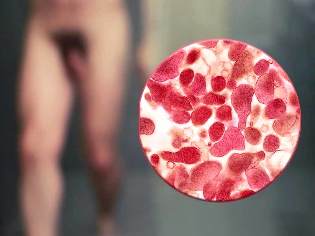
This term refers to one of the types acute bacterial forms of the disease. For purulent prostatitis is characteristic of a substantial increase in the temperature to 40 degrees. In man there is purulent impurities in the urine, violated the urination, there are marked pain in the perineum and in the groin, the area.
The symptoms
The symptoms of the inflammation of the prostate depends on the stage of the illness:
- Catarrhal. In this case, the person appearing of the symptoms of the rapid urination. Also, pain when emptying the bladder. The patient feels a discomfort in the perineum and the sacrum.
- Follicular. The pain syndrome becomes more and more pronounced, sometimes in the area of the anus and increases in the emptying of the intestine. This stage of the disease is accompanied by a violation of urination. In men, urine flows in a thin jet. Sometimes occurs a retention of urine, slight fever.
- Parenchymal. For her, the characteristic symptoms of poisoning, a substantial increase of the temperature to 38 to 40 degrees, the state of chills. In humans, there are problems with urination and pain in the perineum. Often violated defecation.
If the time is not to treat the disease, occurs chronic prostatitis. For him, the characteristic of being knocked out of the surface, the clinical picture. In rare cases, indicators of temperature increase to low-grade fever of values.
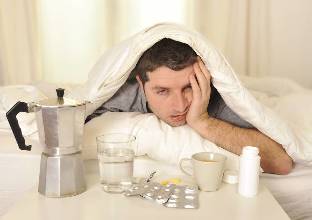
Very often, the pathology is the consequence of chronic inflammation, which is due to the contamination of the specific infection. It may be gonococci, Ureaplasma, Trichomonas. In this case, the person may be a little urethral, are forms of tacit pain in the area of the perineum, the increase of the discomfort during urination.
As the chronic form may be accompanied by a burning sensation in the perineum and urethra. In man we observe excessive fatigue, violations sex, dysuria. In case of problems with the power of the man is confronted with a medium of anxiety, increased anxiety, irritability.
The pain syndrome
The prostate does not contain pain receptors. The factor causing the discomfort is to engage in a process of nerve fibers. In people with a chronic form of the disease, the pain of variable severity, ranging from low to very intense.
The syndrome of the pain varies in intensity during sexual abstinence, ejaculation or increase sexual activity. The discomfort gives to the sacred area of the groin and the scrotum. Sometimes, he even felt in the lumbar area.
Dysuric syndrome
The inflammation causes an increase in the size of the prostate which causes the clamping of the ureter. Its skylight is less. Of man occurs the increase in the frequency of urination. There is also the feeling of incomplete evacuation of the authority.
Generally dysuric disorders manifest themselves in the initial phases of the disease. After this occurs kompensatornaya the hypertrophy of the muscles of the bladder and ureters. At this time, the signs of dysuria are on the decline. During the decompensation of these mechanisms, they are rising again.
The diagnosis
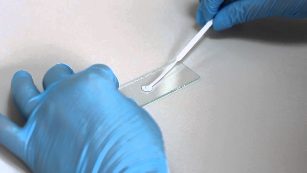
To reveal an inflammation of the prostate, it is necessary to consult a urologist. According to the clinical picture of the pathology, you can define the illness and the stage of its development. The inflammation and the increase in the size of the prostate can be visualized using ultrasound.
Key diagnostic procedures include the following:
- Palpation of the prostate – the manipulation performs urologist;
- Various studies of the urine – general, cytological, bacteriological;
- The microscopic examination of the seminal fluid;
- The removal of the urethra – the analysis of the secretions is performed to evaluate the composition of the microflora;
- The content analysis, PSA – during the manipulation evaluate specific protein of the prostate.
In most cases, these manipulations, it is enough. If you have the complexity, and the diagnosis is urodynamic research. To do this, the man is hospitalized.
In more rare cases, Cytoscape. This procedure applies only for. It can be curative. The manipulation provides an internal study of the bladder and the urethra. In the absence of damage, it is not necessary to perform the procedure.

Treatment
The methods of treatment of prostatitis choose given the shape and peculiarities of development of the disease. Prostatitis acute is accompanied by a strong intoxication, febrile state, of the violation of health.
In this case, the patient requires immediate hospitalization. He shows the introduction of antibiotics by the intravenous route. Other forms of prostatitis, the need of such a treatment is missing.
Drug therapy
When bacterial form of pathology recommended the use of antibiotics. If the cause of the disease is not bacteria, the use of these funds does not give the expected results.
Antibiotics are used for the treatment of nearly all acute infections. The drugs in the acute form of the disease choose taking into account diagnostic data. The doctor defines a variant of the organization, which has caused a pathology, and the degree of sensitivity to the drugs.
To deal with constant pain in the pelvic and perineal, illustrates the use of muscle relaxants and alpha-blockers. With the help of spasmolytic means and alpha-blockers can relax the muscles of the affected organ and the bladder. This facilitate the excretion of urine and manages with the symptoms of the disease.
To eliminate the voltage protection of muscle tissue, the elimination of sealing an inflammation of the prostate and the reduction of pain, the doctor may prescribe musculoskeletal disorders-relaxation medication.
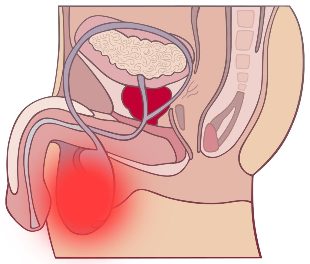
In complex situations can not do without the introduction of intravenous fluids and use of diuretics. Thanks to this therapy may not stimulate the excretion of urine, which helps prevent intoxication. This treatment allows you to avoid ascending infection from the bladder.
To eliminate the signs of non-bacterial forms of the disease prescribe drugs for pain, antipyretic drugs with anticholinergic effects of the tool. During the chronic constipation need to use stool softeners. An effective way is a mineral oil.
Even when the resolution of the main symptoms of acute bacterial pathology it is important to follow a therapy completely. If you stop the therapy in advance, the chances of developing a chronic disease. Thereafter prescribed to support the treatment methods.
In some cases, the evolution of the pathology need to conform to a particular diet plan. It is the suppression of the acute and fatty foods. Also, you must give up the caffeine. Under are banned and acidic beverages.
On the status of men has a positive effect a systematic ejaculation. It ensures the drainage of the prostate is the secret. Violation of urination impose temporary surpubienne traditional fistula small this. May also be periodically performed the catheterization.
Surgery
The operation is recommended in the absence of the effect of the use of drugs. Also an indication to surgical treatment of prostatitis is to block the flow of urine from the prostate. It is necessary to take into consideration that the younger patients, this method is not prescribed, as it can cause infertility.
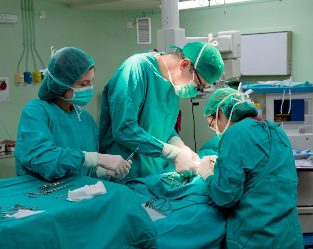
There are several types of interventions:
- Transurethral resection of the authority, it requires the removal of all affected tissue;
- Prostatectomy – the procedure is to remove the prostate and the adjacent tissues. In the course of handling cut and the seminal vesicles. It is very difficult intervention, which often causes impotence and may be the cause of the incontinence.
The consequences
If time does not begin treatment, there is a risk of dangerous consequences for health. First of all prostatitis harmful to the development of abscesses. During the formation of the pus of the defeat of the prostate increases strongly with the temperature. The heat is replaced by the symptoms of fever.
A strong pain syndrome in the crotch leads to a violation of urination and defecation. The increased swelling of the prostate gland causing severe problems with urination.
In more rare cases, it occurs independent of the dissection of the abscess, after which its contents enters the intestine or urethra.
The spread of infection during the chronic form of the disease leads to the emergence of cystitis and pyelonephritis. He frequents the consequences of the pathology ominous inflammatory the defeat of the testicles and their appendages. Also there is a risk of the appearance vesiculitis, which is an inflammation of the seminal vesicles. The result of these processes often reproductive disorders.

Prevention
To prevent the onset of inflammation or relapse of chronic pathology, comply with these recommendations:
- Reduce the amount of alcohol;
- Systematically do sports;
- Prevent hypothermia;
- Stop smoking;
- To avoid stressful situations;
- The time to treat inflammation, especially in infections of the genital area;
- Take a shower;
- Avoid lifting heavy objects;
- Use barrier methods of contraception;
- Systematically to have sex;
- Take vitamin supplements;
- Take care of strengthening of immunity;
- Twice a year to attend to a urologist;
- Properly and eat in a balanced way.































